Arak: Bali’s Enigmatic Elixir
Arak is a traditional Balinese spirit, a clear, potent liquor with an alcohol content between 20 to 50%, made from distilled rice, though it can also be crafted from coconut or sugarcane.
With roots tracing back centuries, Arak has been a cornerstone of Balinese religious ceremonies and communal gatherings, embodying the island’s self-sustaining ethos and cultural richness.
The production process involves fermenting the base ingredients to create a milder alcoholic beverage called Brem, which is then distilled to produce Arak, often in homemade stills employing a basic condensation method. While its fiery taste can be a challenge for uninitiated palates, when mixed with ingredients like honey or lime, Arak becomes a more approachable delight.
However, the unregulated production of Arak can sometimes result in dangerous levels of methanol, posing serious health risks, and hence indulgence in this traditional drink should be approached with caution.
Bali, a slice of paradise nestled amidst the Indonesian archipelago, teems with a rich tapestry of cultural and culinary treasures. Among its liquid legacies, Arak holds a distinct position. This traditional Balinese spirit embodies the island’s rustic charm and ancient traditions. As an expat who found a second home in the heart of Bali, exploring the mysteries of Arak has been nothing short of an exhilarating journey.
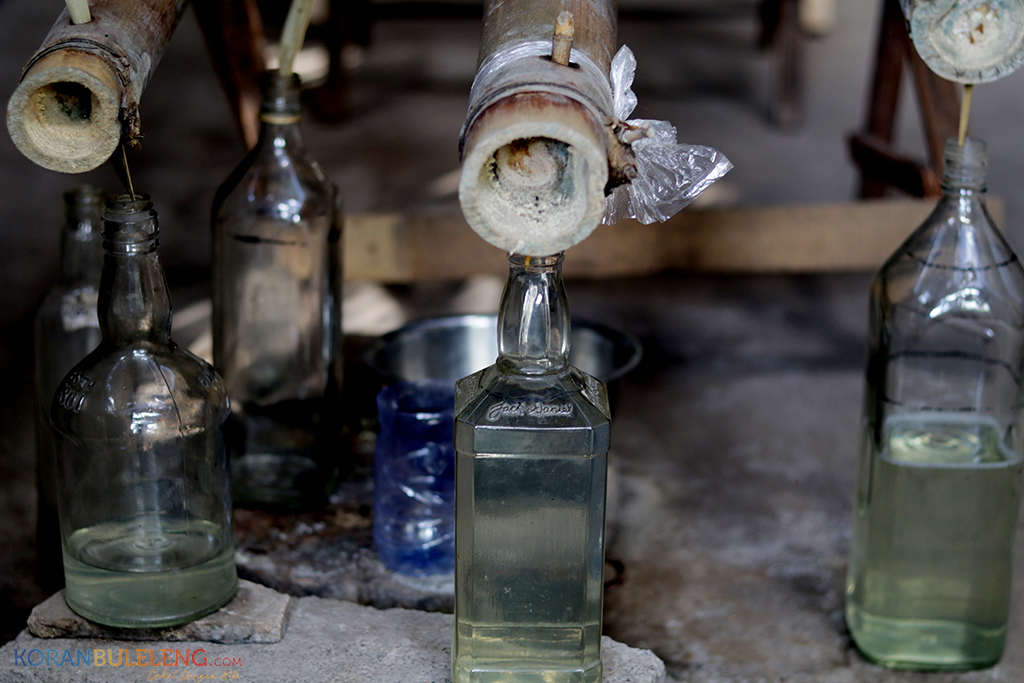
Origins of Arak
The origins of Arak in Bali are deeply entrenched in the island’s rich cultural and historical tapestry. This traditional beverage dates back to the Majapahit era (1293-1527), a period marked by the flourishing of Hindu culture and the establishment of powerful kingdoms across the Indonesian archipelago. It’s believed that the Mongol invasion played a pivotal role in introducing arak and distillation technology to Java, which eventually found its way to Bali.
The nomenclature ‘Arak’ is derived from Arabic, meaning ‘sweat,’ which is indicative of its Middle Eastern lineage. However, the version of arak found in Bali is distinct from its Middle Eastern counterpart, showcasing the unique Balinese adaptation of this traditional distillate.
Over centuries, arak ingrained itself in Balinese society, not merely as a beverage but as a symbol of communal camaraderie and religious observance. The production of arak is a cottage industry, often drawing parallels with Scotland’s whisky industry of the 1500s. The home-based distillation methods employed in Bali resonate with the rudimentary practices once prevalent in Scotland.
Arak’s significance transcends its potent taste, as it also carries social and cultural value within Balinese society. In January 2020, the Governor of Bali acknowledged this heritage by legalizing Arak, thus paving the way for its recognition as a valuable cultural asset.
Subsequently, in 2021, it was designated as one of the Indonesian Intangible Cultural Heritages by the Indonesian Ministry of Education, Culture, Research, and Technology. This recognition further elevated its status when Bali Arak was chosen as a souvenir for attendees at the 2022 G20 Bali Summit.
Through these historical traverses and cultural imprints, Arak stands as a testament to Bali’s enduring tradition and its fluid dialogue with external influences. Its journey from an ancient era to a modern-day cultural emblem encapsulates the essence of Balinese resilience and the island’s rich gastronomic legacy.
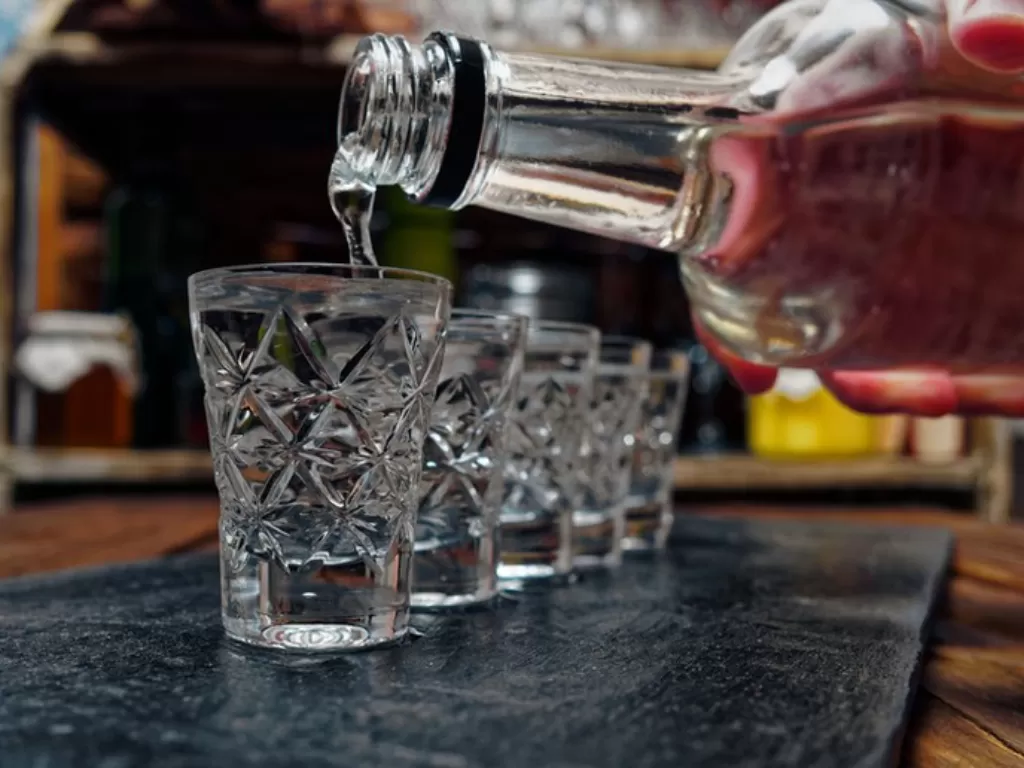
What is Bali Arak?
Arak is a clear, colorless spirit, typically boasting an alcohol content of 20 to 50 percent. The primary ingredient in its production is distilled rice, although the process may also incorporate a blend of other local fruits such as coconut or sugarcane.
On the palate, Arak is potent and has a unique, somewhat fiery taste. The spirit’s robust character can be somewhat softened when mixed with other ingredients, such as honey, lime, or local fruits, creating a more palatable concoction for those unaccustomed to its strength.
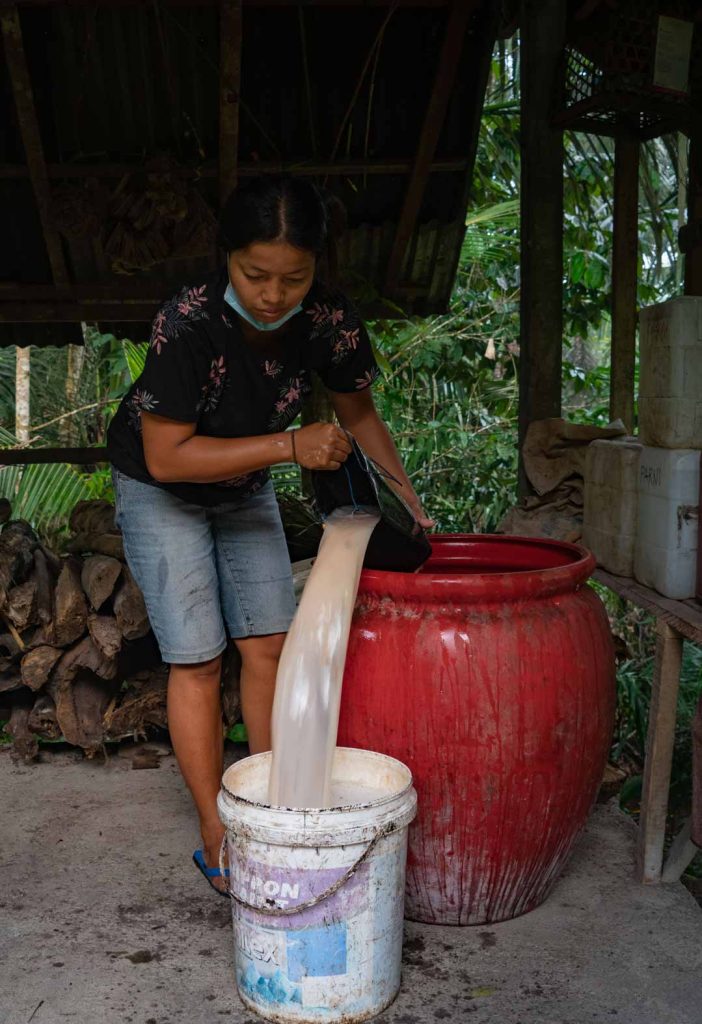
The Making of Arak
The process of making Arak is a time-honored tradition passed down through generations. It begins with fermentation, where rice or other fermentable substrates are left to ferment, often in clay pots, to produce a mild alcoholic beverage known locally as Brem.
The Brem is then distilled to produce Arak. The distillation process is a simple, yet delicate art, usually carried out in homemade stills, utilizing a basic condensation method to separate the alcohol.
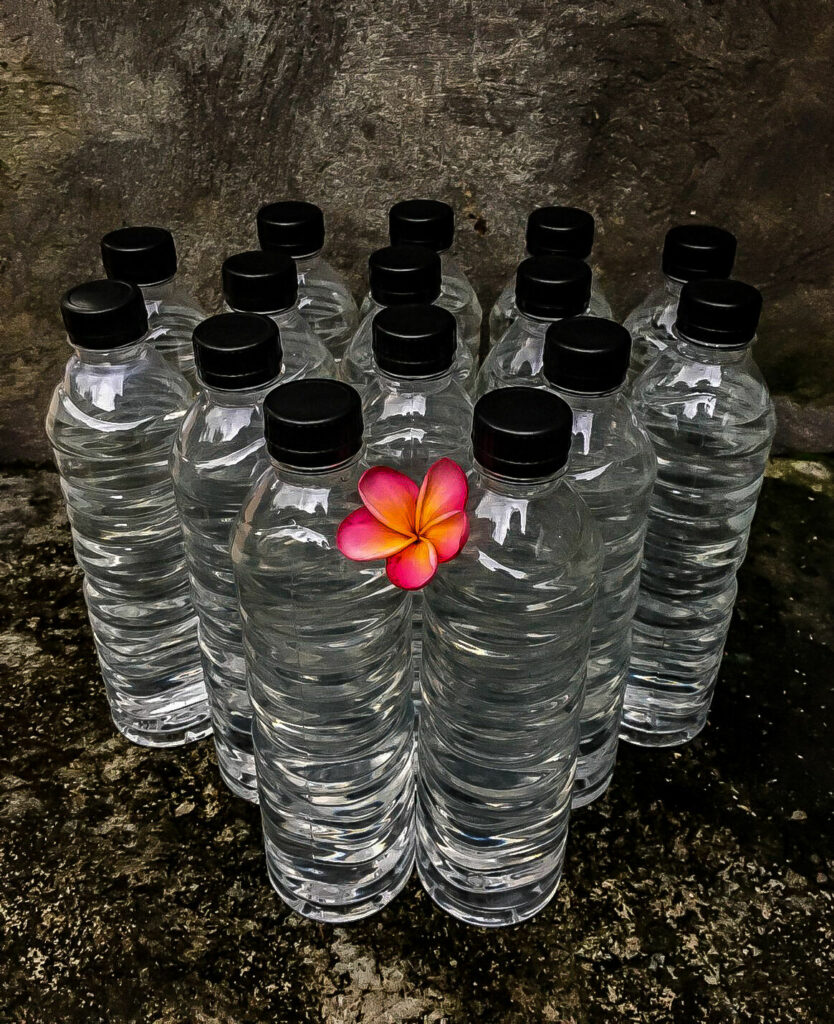
Where to Get Arak
Arak, the traditional Balinese spirit, can be found at various places across the island. Other than bars and pubs, here are some options for those looking to purchase or taste Arak in Bali:
+ Warungs
Many warungs, which are small local restaurants or shops, sell Arak, often distilled locally. For an authentic Arak experience, visiting a warung is the way to go, though caution is advised due to potential health risks associated with locally distilled Arak.
+ Liquor Stores
If you prefer a safer option, official liquor stores provide properly bottled Arak, ensuring a more regulated quality of the spirit.
+ Supermarkets
Some supermarkets that sell liquor, like Hardy’s, also offer Arak. Particularly, look for labels indicating that the Arak is made in Singaraja, known for producing quality Arak.
+ Denpasar Airport
If you didn’t get the chance to taste Arak while in Bali, you can grab a bottle at Denpasar Airport before heading home, making for a great souvenir to reminisce on your Balinese adventure.
These options cater to different preferences, whether you are seeking an authentic local experience or prefer a more regulated purchase. Remember to exercise caution, especially when purchasing from local distillers, due to the potential presence of harmful substances like methanol in improperly distilled Arak.
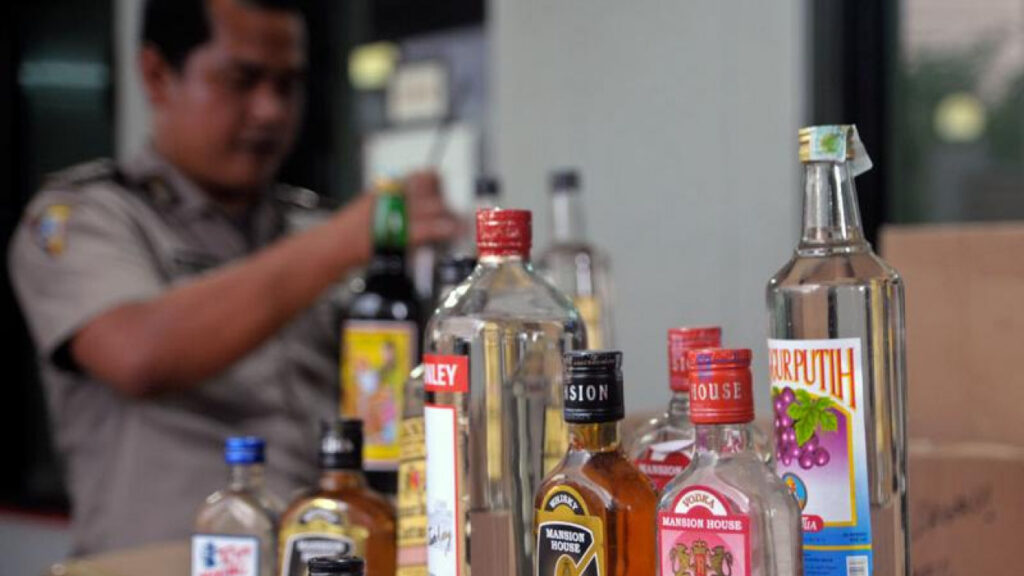
Arak Madu
Arak Madu is a cherished Balinese cocktail made from the local spirit, Arak, combined with honey (Madu in Indonesian) and sometimes additional ingredients like lime juice and water. This concoction provides a balance of tart, sweet, and alcoholic elements, often compared to a “poor man’s Margarita” due to its similar flavor profile.
The roots of Arak stretch back to the Arabic word for ‘sweat,’ hinting at the distillation process. However, the Balinese variant has carved its unique identity over time, becoming an essential part of the island’s social and religious fabric. The drink, distilled primarily from the sap of palm or coconut trees or fermented rice, mirrors the lush, agrarian landscape of Bali.
The primary ingredient, Arak, ranges in alcohol content from about 15% to a potent 50%, depending on the preparation method. It’s traditionally made from fermented sap of coconut or palm trees, or sometimes from fermented brown rice. The process of making Arak is often carried out traditionally, especially in rural areas. When it comes to Arak Madu, the simplicity is key; arak is mixed with honey, and often lime juice and water are added to create a refreshing cocktail known as Arak Madu or Arak Attack when lime is included.
Arak Madu is lauded for its balanced taste that marries the sweet notes from honey with the robust, clear spirit of Arak, and a tangy kick from lime, providing a harmonious blend of flavors that has become a favorite among both locals and tourists.
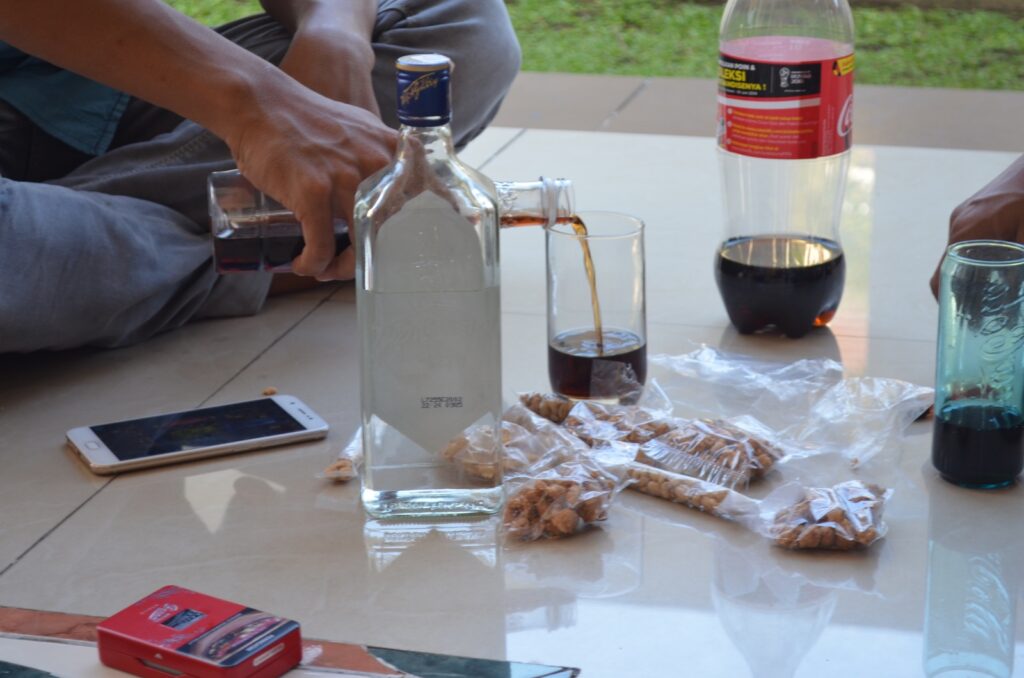
Potential Dangers
While Arak is a beloved part of Balinese culture, it does come with a cautionary tale. The production of Arak is often unregulated, which, in some cases, has led to the presence of dangerous levels of methanol, a toxic alcohol. In recent years, there have been instances of methanol poisoning from consuming poorly made Arak, which has led to serious illness and even death among both locals and tourists.
Arak is more than just a beverage; it’s a symbol of Balinese heritage and communal camaraderie. It offers a taste of the island’s ancient traditions, wrapped in a potent, fiery elixir. However, the quest for authenticity should be navigated with caution, ensuring that one’s indulgence in this traditional tipple is both safe and enjoyable.






